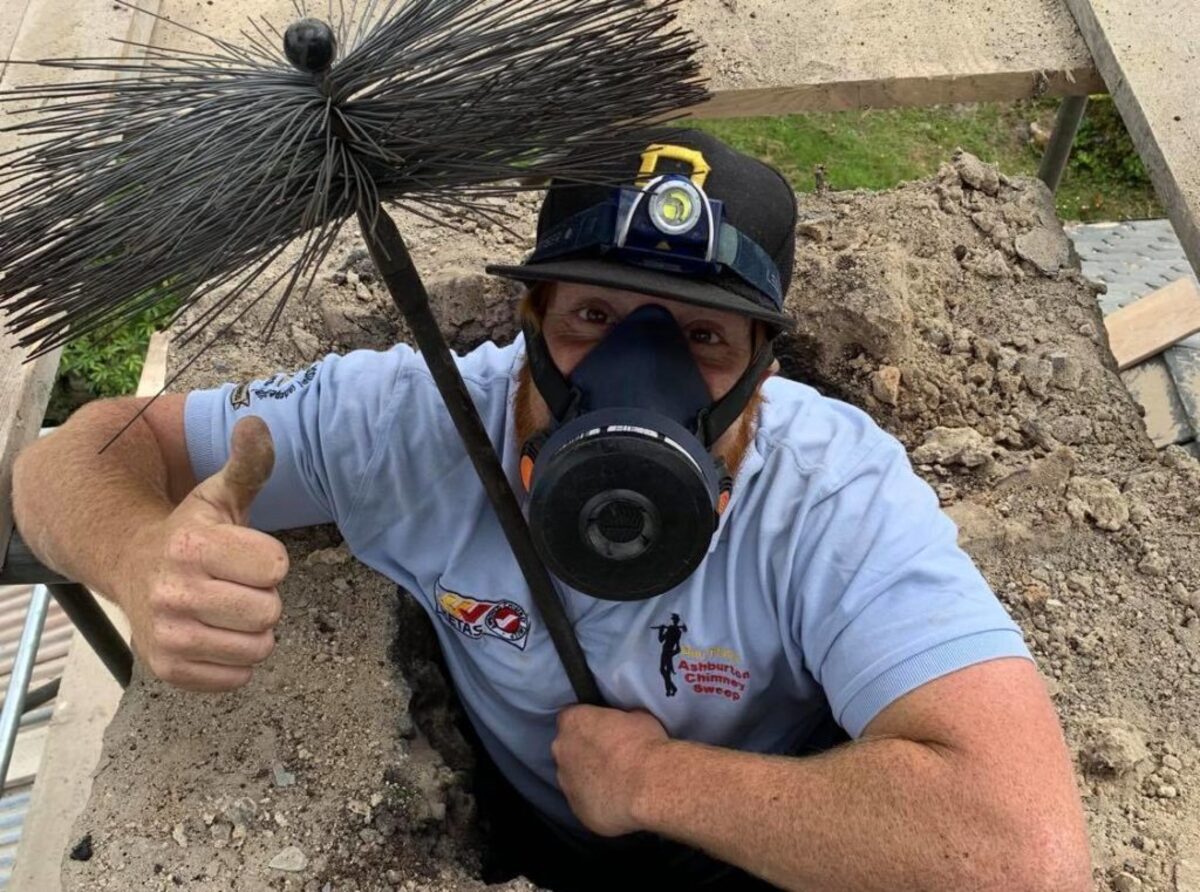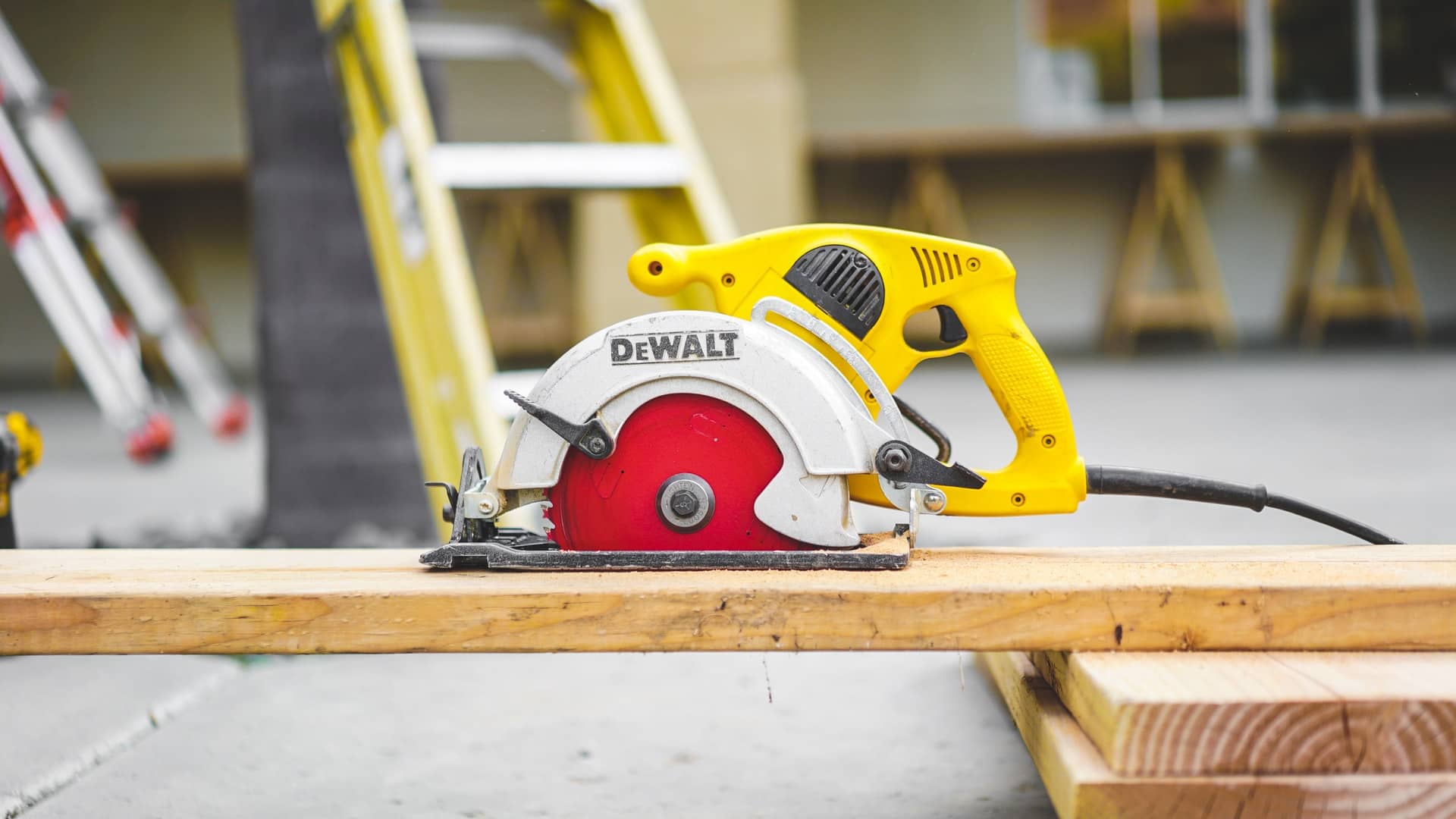Home>Home Maintenance>Do Insurance Companies Always Pay What Adjusters Recommend On Home Repair Claims


Home Maintenance
Do Insurance Companies Always Pay What Adjusters Recommend On Home Repair Claims
Modified: March 21, 2024
"Discover if insurance companies always pay what adjusters recommend on home repair claims. Learn how to navigate the process and ensure fair compensation for your home maintenance needs."
(Many of the links in this article redirect to a specific reviewed product. Your purchase of these products through affiliate links helps to generate commission for Storables.com, at no extra cost. Learn more)
Introduction
When it comes to home repair claims, many homeowners may wonder if insurance companies always pay what adjusters recommend. Insurance adjusters play a crucial role in evaluating damage, estimating repair costs, and ultimately determining the amount of compensation homeowners will receive for their home repairs. However, the payment process can sometimes be complex and nuanced, with various factors influencing the final payout.
In this article, we will delve into the world of insurance adjusters and shed light on their role in the home repair claim process. We will explore the evaluation and recommendation process, the factors that may affect payment decisions, and instances where insurance companies may not pay the recommended amounts. Additionally, we will discuss the policyholder’s options if they are unsatisfied with the payment offered by the insurance company.
It’s important to note that while insurance adjusters strive to accurately assess the damage and recommend fair payments, the final decision rests with the insurance company. Understanding this dynamic can help homeowners navigate the claims process more effectively and make informed decisions about their home repairs.
So, let’s take a closer look at how insurance adjusters operate and how their recommendations can impact the payment homeowners receive for their home repair claims. By gaining insight into the factors at play, homeowners can better advocate for their rights and ensure they receive the compensation they deserve.
Key Takeaways:
- Insurance adjusters assess home repair claims, but the final payment decision rests with the insurance company. Homeowners should understand their policy, communicate openly, and seek reevaluation or third-party assistance if unsatisfied with the payment offer.
- Disagreements between adjusters and insurance companies can affect payment amounts. Homeowners have options to seek fair resolution, including requesting reevaluation, filing complaints, or seeking legal advice if needed.
Understanding Insurance Adjusters and their Role
Insurance adjusters are professionals who work on behalf of insurance companies to evaluate and investigate insurance claims. Their primary role is to assess the extent of damage to a property and determine the appropriate amount of compensation to be paid by the insurance company.
There are two types of insurance adjusters: company adjusters, who are employed by the insurance company, and independent adjusters, who are hired by the insurance company on a case-by-case basis. These adjusters have extensive knowledge and experience in assessing property damage and estimating repair costs.
When a homeowner files a claim for home repairs, an insurance adjuster is assigned to assess the damage. The adjuster will visit the property and conduct a thorough evaluation, taking into account the extent of the damage, the cause of the damage, and any relevant policy terms and conditions.
During the evaluation process, the adjuster will document the damage by taking photographs, measurements, and detailed notes. They may also interview the homeowner and any witnesses to gather additional information. Based on this assessment, the adjuster will estimate the cost of repairs and prepare a recommendation for the insurance company.
The adjuster’s recommendation serves as a guideline for the insurance company when determining the amount of compensation to be offered to the homeowner. However, it is important to note that the final decision rests with the insurance company, as they have the authority to accept or modify the adjuster’s recommendation.
Insurance adjusters must follow specific guidelines provided by the insurance company when assessing and evaluating claims. They are trained to look for signs of damage, consider applicable policy coverage limits, and determine the cost of repairs based on prevailing market rates.
Moreover, insurance adjusters are responsible for investigating the cause of the damage to ensure it falls within the scope of the homeowner’s insurance policy. For example, if a homeowner files a claim for water damage, the adjuster will investigate whether the water damage was caused by a covered peril, such as a burst pipe or a storm, or if it is a result of negligence or lack of maintenance, which may not be covered.
In summary, insurance adjusters play a crucial role in the home repair claim process. They are responsible for evaluating damage, estimating repair costs, and preparing a recommendation for the insurance company. While their recommendations carry significant weight, it is the insurance company that ultimately decides the amount of compensation to be paid. Understanding the role of insurance adjusters can help homeowners navigate the claims process and advocate for fair compensation.
The Evaluation and Recommendation Process
When it comes to home repair claims, the evaluation and recommendation process is a critical step in determining the compensation homeowners will receive for their repairs. Insurance adjusters follow a structured approach to assess the damage and estimate the repair costs. Let’s take a closer look at the evaluation and recommendation process:
1. Property Inspection: The insurance adjuster will visit the homeowner’s property to assess the extent of the damage. They will carefully examine the affected areas and document the damage through photographs, measurements, and detailed notes. This thorough inspection enables the adjuster to accurately determine the scope of repairs needed.
2. Documentation Collection: In addition to inspecting the property, the adjuster will gather all relevant documentation related to the claim. This may include the homeowner’s insurance policy, invoices or receipts for repairs, and any other supporting documents that provide insight into the damage and repair costs.
3. Estimation of Repair Costs: Once the adjuster has gathered all necessary information, they will estimate the cost of repairing the damage. This estimation takes into account factors such as materials needed, labor costs, and prevailing market rates for similar repairs. The adjuster may consult with contractors or industry professionals to ensure an accurate assessment.
4. Policy Coverage Analysis: After estimating the repair costs, the adjuster will review the homeowner’s insurance policy to determine the coverage limits and applicable exclusions. They will ensure that the damage falls within the scope of the policy coverage and assess any deductibles or limitations that may affect the final compensation amount.
5. Recommendation Preparation: Based on the thorough evaluation, the adjuster will prepare a recommendation for the insurance company. This recommendation includes a detailed breakdown of the damage, repair costs, and supporting documentation. The adjuster may also provide their professional opinion on the extent of the damage and the appropriate compensation amount, considering the policy coverage.
6. Submission to the Insurance Company: Once the recommendation is prepared, the adjuster will submit it to the insurance company for review. The insurance company will evaluate the adjuster’s findings and recommendation to determine the final compensation amount to be offered to the homeowner.
Throughout this evaluation and recommendation process, it is essential for adjusters to maintain open communication with homeowners. They should explain their assessment and the basis for their recommendation, ensuring that homeowners have a clear understanding of the process and the factors influencing the decision-making.
It’s important to note that the evaluation and recommendation process may vary slightly depending on the insurance company and the specific circumstances of the claim. However, the overall objective remains the same – to accurately assess the damage and provide a fair and reasonable recommendation for compensation.
By following this structured process, insurance adjusters aim to provide homeowners with an appropriate compensation amount that covers the cost of repairs and helps restore their property to its pre-damaged condition.
Factors That May Affect Payment Decisions
When determining the amount of compensation to be paid for home repair claims, insurance companies take various factors into consideration. These factors can have a significant impact on the final payment decision. Let’s explore some key factors that may influence payment decisions:
1. Policy Coverage and Limits: The homeowner’s insurance policy plays a crucial role in determining the coverage and limits for repairs. Insurance companies carefully review the policy to ensure that the damage falls within the covered perils and does not exceed the policy’s coverage limits. If the damage is caused by a non-covered peril or exceeds the policy limits, the payment decision may be affected.
2. Deductibles: Homeowners are responsible for paying a deductible before the insurance company provides compensation for repairs. The amount of the deductible is determined by the policy and can affect the final payment decision. Higher deductibles may result in lower compensation amounts, as the homeowner bears a greater portion of the repair costs.
3. Pre-existing Damage: Insurance companies may consider pre-existing damage when evaluating a claim. If the adjuster determines that a portion of the damage was not caused by the covered event but existed prior to the claim, the payment decision may be adjusted accordingly. The insurance company typically covers only the costs associated with the damage caused by the covered event.
4. Comparative Estimates: Insurance adjusters often obtain multiple estimates from contractors or industry professionals to compare repair costs. These comparative estimates help validate the adjuster’s recommendation and ensure that the proposed compensation amount is reasonable and in line with prevailing market rates.
5. State and Local Regulations: Payment decisions can also be influenced by state and local regulations governing insurance claims. These regulations may impose restrictions or requirements on the insurance company, which can impact the final payment amount. Adjusters must stay informed about these regulations to ensure compliance.
6. Policy Endorsements: Some insurance policies may have specific endorsements or additional coverage options that affect payment decisions. These endorsements may provide additional coverage for certain types of damage, or they may impose specific conditions or limitations. Adjusters must consider these policy endorsements when making their recommendation.
7. Inflation and Depreciation: Adjusters take into account the impact of inflation and depreciation when estimating repair costs. They consider the age and condition of the damaged items and may apply depreciation factors to calculate the appropriate compensation amount. This factor ensures that the payment reflects the actual value of the damaged property at the time of the claim.
8. Dispute Resolution: In some cases, if there is a dispute between the homeowner and the insurance company regarding the damage assessment or recommended compensation, the payment decision may be delayed or subject to further negotiation. The resolution of these disputes can affect the final payment amount.
It is important to note that these factors may vary depending on the specific insurance policy, state regulations, and the circumstances of the claim. Insurance adjusters carefully consider these factors and aim to make fair and reasonable payment decisions that align with the terms of the policy and the evaluation of the damage.
By understanding these factors that may affect payment decisions, homeowners can better navigate the claims process and advocate for their rights to ensure fair and just compensation for their home repairs.
Insurance companies do not always pay what adjusters recommend on home repair claims. It’s important to review your policy, negotiate with the adjuster, and consider hiring a public adjuster if needed.
Potential Disagreements Between Insurance Companies and Adjusters
In the world of home repair claims, disagreements can sometimes arise between insurance companies and adjusters regarding the assessment of damage and the recommended compensation. These disagreements can have a significant impact on the final payment decision. Let’s explore some potential areas of disagreement:
1. Scope of Damage: Insurance adjusters may have a different interpretation of the extent of the damage compared to the insurance company. This can result in a discrepancy in the recommended compensation amount. Adjusters may argue that certain damages should be included in the claim, while the insurance company may dispute the validity or cause of those damages.
2. Repair Costs: There may be disagreements between adjusters and insurance companies regarding the estimated repair costs. Adjusters strive to provide accurate cost estimates based on their knowledge and expertise, considering factors such as materials, labor, and prevailing market rates. However, insurance companies may question or challenge these estimates, potentially leading to conflicts.
3. Policy Interpretation: Adjusters and insurance companies may interpret the insurance policy differently, leading to disagreements on coverage and limitations. Adjusters may argue that certain damages fall within the policy coverage, while the insurance company may have a different interpretation. These disputes can impact the recommended compensation amount.
4. Depreciation and Valuation: Adjusters incorporate depreciation factors when estimating repair costs, considering the age and condition of the damaged property. However, insurance companies may have differing opinions on depreciation amounts or valuation methods. Disagreements in depreciation calculations can affect the overall payment decision.
5. Exclusions and Limitations: Insurance policies often contain exclusions and limitations that may impact the payment decision. Adjusters and insurance companies may have differing interpretations of these policy provisions, leading to disputes over compensation. It is important to carefully review the policy terms to resolve any disagreements.
6. Insufficient Documentation: In some cases, insurance adjusters may provide comprehensive documentation and evidence to support their recommended compensation. However, insurance companies may argue that certain documents or evidence are insufficient or lacking. This disagreement can delay the payment process or require further investigation.
7. New or Emerging Damage: Adjusters may identify additional damage during the course of their evaluation that was not initially reported by the homeowner. In such cases, insurance companies may question the cause or validity of the newly identified damage, leading to disagreements on the coverage and compensation.
8. Negotiation Tactics: In rare instances, disagreements between adjusters and insurance companies may stem from differing negotiation tactics. Insurance companies may apply pressure to adjusters to reduce the recommended compensation amount, while adjusters may argue for a higher payment to adequately cover the repairs. These conflicts can stall the resolution of the claim.
When disagreements arise between insurance companies and adjusters, it is essential for both parties to engage in open and constructive dialogue to resolve the disputes. This may involve providing additional documentation, conducting further investigation, or seeking third-party arbitration if necessary. Effective communication and a willingness to find a mutually agreeable solution are key to overcoming disagreements and reaching a fair payment decision.
By understanding the potential areas of disagreement, homeowners can be better prepared to navigate any disputes that may arise and work towards a resolution that ensures proper compensation for their home repairs.
Instances Where Insurance Companies May Not Pay Recommended Amounts
While insurance adjusters strive to provide accurate assessments and make reasonable recommendations for compensation, there are instances where insurance companies may not pay the full recommended amount. Let’s explore some situations where this may occur:
1. Policy Coverage Limitations: Insurance policies often have coverage limitations and exclusions that may impact the payment decision. If the recommended amount exceeds the policy’s coverage limits or falls within an exclusion, the insurance company may not pay the full recommended amount. It is crucial for homeowners to review their policy to understand these limitations and manage their expectations accordingly.
2. Deductibles: Homeowners are typically responsible for paying a deductible before the insurance company provides compensation. If the recommended amount is lower than the deductible, the insurance company may not issue a payment. For example, if the recommended amount is $500 and the deductible is $1,000, the homeowner would need to cover the repairs out of pocket.
3. Disputed Damage Assessment: In some cases, insurance companies may dispute the adjuster’s assessment of the damage. They may believe that certain damages were not caused by the covered event or that the extent of the damage is exaggerated. Consequently, the insurance company may offer a lower payment amount based on their own evaluation.
4. Disagreements on Repair Costs: Insurance companies may have different estimates or opinions on the reasonable repair costs compared to the adjuster’s recommendations. These discrepancies can lead to negotiations or reevaluations of the estimates, potentially resulting in a lower payment than initially recommended by the adjuster.
5. Insufficient Documentation: If the adjuster’s documentation or evidence is deemed insufficient by the insurance company, they may challenge the recommended amount. Insurance companies typically require robust documentation to support the claim. If the adjuster fails to provide satisfactory evidence, the payment decision may be affected.
6. Policy Exclusions: Insurance policies may contain specific exclusions that apply to certain types of damage. If the adjuster recommends compensation for damage that falls within these exclusions, the insurance company may refuse to pay the recommended amount. It is vital for adjusters to be familiar with the policy exclusions and ensure their recommendations align with the coverage.
7. Fraud or Misrepresentation: If the insurance company suspects fraud or intentional misrepresentation on the part of the homeowner or adjuster, they may deny or reduce the recommended payment amount. Insurance companies have processes in place to investigate fraudulent claims and take appropriate action if deception is uncovered.
8. Non-covered Perils: If the adjuster’s recommendations include damage caused by non-covered perils or non-insurable events, the insurance company may not pay for those damages. It is important for adjusters to accurately identify and differentiate between covered and non-covered perils to avoid discrepancies in payment decisions.
It is essential for homeowners to thoroughly review their insurance policy, communicate openly with their adjuster, and understand the reasons behind any discrepancies in payment amounts. In some cases, negotiations and appeals may be necessary to reach a resolution that is fair to all parties involved.
By being aware of these instances where insurance companies may not pay the full recommended amount, homeowners can enter the claims process with realistic expectations and seek assistance from professionals if needed to ensure they receive proper compensation for their home repairs.
The Policyholder’s Options When Unsatisfied with Payment
When policyholders are unsatisfied with the payment offered by their insurance company for their home repair claim, it is important for them to understand their options and take appropriate steps to seek a fair resolution. Here are some potential courses of action available to policyholders:
1. Review the Insurance Policy: The first step is for policyholders to carefully review their insurance policy to understand the coverage, deductibles, policy limits, and any applicable exclusions. By having a clear understanding of the policy terms, policyholders can assess whether the offered payment aligns with the terms of their coverage.
2. Contact the Insurance Company: Policyholders should reach out to the insurance company to express their concerns and state their reasons for being unsatisfied with the payment. It is important to maintain open communication and provide any additional documentation or evidence that supports a higher payment amount.
3. Request Reevaluation: Policyholders can request a reevaluation of their claim by asking the insurance company to send another adjuster to assess the damage. This can be particularly helpful if there is a disagreement between the initial adjuster’s assessment and the policyholder’s perception of the damage.
4. Seek Third-Party Assistance: If the policyholder and insurance company cannot resolve the issue through direct communication, seeking third-party assistance can be valuable. This can involve hiring an independent public adjuster who can represent the policyholder’s interests and negotiate with the insurance company on their behalf.
5. File a Complaint: Policyholders have the option to file a complaint against the insurance company with the appropriate regulatory authority. Each state has a department of insurance or similar governing body that oversees insurance companies’ practices and handles consumer complaints. Filing a complaint can initiate an investigation and potentially lead to a resolution.
6. Consider Mediation or Arbitration: Policyholders can explore alternative dispute resolution methods such as mediation or arbitration. These processes involve a neutral third party who helps facilitate discussions and potentially reach a settlement. Mediation and arbitration can be faster and less costly than going to court, offering a more efficient way to resolve disputes.
7. Seek Legal Advice: If all attempts to resolve the dispute are unsuccessful, policyholders may consider consulting with an attorney specializing in insurance claims. Legal professionals can provide guidance on the policyholder’s rights, assess the strength of their case, and represent them in formal proceedings, such as litigation, if necessary.
It is crucial for policyholders to be proactive, document all communication with the insurance company, and keep thorough records of their claim. This includes photographs, estimates, invoices, and any other pertinent information that supports their case.
Ultimately, the goal is to reach a fair and satisfactory resolution for both the policyholder and the insurance company. By exploring these options and seeking appropriate assistance, policyholders can assert their rights and work towards obtaining the compensation they deserve for their home repairs.
Conclusion
The world of home repair claims can be complex and nuanced, with various factors influencing the payment decisions made by insurance companies. Insurance adjusters play a critical role in evaluating damage, estimating repair costs, and recommending compensation amounts. However, disagreements and discrepancies can arise between adjusters and insurance companies, leading to potentially unsatisfactory payment offers for policyholders.
Understanding the evaluation and recommendation process, as well as the factors that may affect payment decisions, empowers policyholders to navigate the claims process more effectively. By being aware of the potential areas of disagreement and the options available when unsatisfied with a payment offer, policyholders can take proactive steps to seek fair resolution.
Policyholders should carefully review their insurance policies, communicate openly with their adjusters, and maintain thorough documentation throughout the claims process. By staying informed and actively involved, they can advocate for their rights and ensure that the recommended payment aligns with the terms of their coverage.
In cases where disagreements persist, policyholders can request reevaluation, seek third-party assistance, file a complaint with the appropriate regulatory authority, consider alternative dispute resolution methods such as mediation or arbitration, or consult with legal professionals if needed. These actions can help policyholders pursue a fair and satisfactory resolution for their home repair claims.
It’s important for policyholders to remember that while insurance adjuster recommendations carry weight, the insurance company ultimately makes the final payment decision. The adjuster’s role is to provide a professional assessment and recommendation based on their expertise, but the insurance company has the authority to accept, modify, or deny the recommendation.
Policyholders should approach the claims process with realistic expectations and maintain open communication with the insurance company. By working together and seeking mutually agreeable solutions, policyholders can increase the chances of receiving proper compensation for their home repairs.
Ultimately, the goal is to restore and repair the home to its pre-damaged condition, providing homeowners with peace of mind and financial stability. By understanding the processes, options, and potential challenges in the home repair claims journey, policyholders can advocate for their rights and navigate the path towards a fair resolution.
Frequently Asked Questions about Do Insurance Companies Always Pay What Adjusters Recommend On Home Repair Claims
Was this page helpful?
At Storables.com, we guarantee accurate and reliable information. Our content, validated by Expert Board Contributors, is crafted following stringent Editorial Policies. We're committed to providing you with well-researched, expert-backed insights for all your informational needs.














